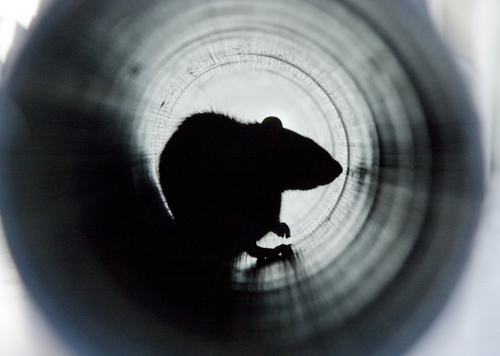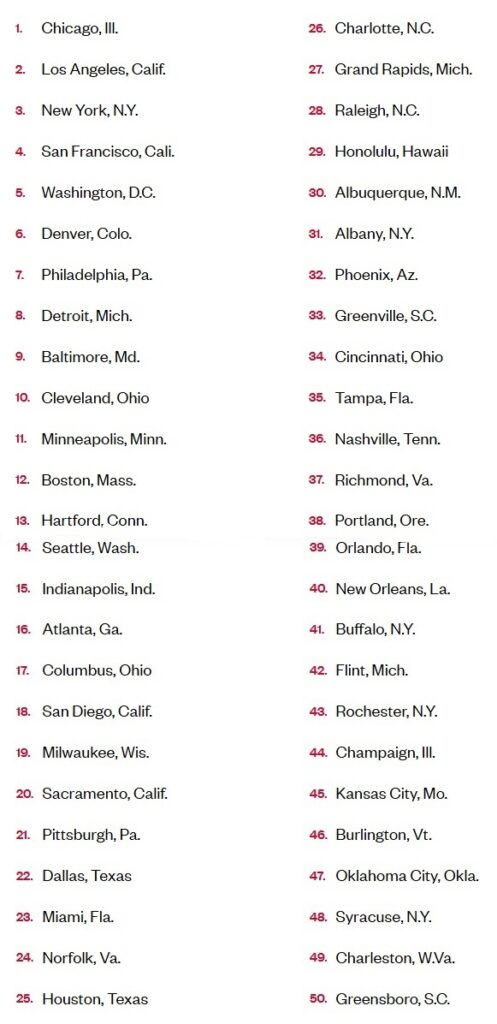Is your facility in one of the country’s most rat-infested cities? Just in time for Halloween, Orkin has released its annual Top 50 Rattiest Cities List, and Chicago has secured the No. 1 spot for the tenth straight year in a row. The pest management company also highlighted the hazards of a rodent infestation, warning signs to look out for, and prevention tips.

According to Orkin, Chicago’s decade-long dominance on the list highlights the city’s ongoing battle with rodents, as well as the efforts taken to treat their presence, which has been driven largely by the Windy City’s infrastructure and environment. Chicago’s abundance of alleys provides rodents with hidden havens, offering plenty of space to hide while feasting on trash. Rodents also love to burrow, finding shelter beneath subway tracks or around underground pipes. In these hidden spots, the rodent population can grow if left unchecked.
Other large cities face similar challenges with rats. Los Angeles, ranked No. 2, and New York City, ranked No. 3, have been among the top three rattiest cities since 2017. Of the 50 cities, New York state is represented the most, with five cities making the list: New York, Albany, Buffalo, Rochester, and Syracuse.
Orkin ranked the cities by the number of new rodent treatments performed from Sept. 1, 2023, to Aug. 31, 2024.

Rodent Hazards
Mice and rats are a serious concern to the millions of homeowners and businesses who deal with infestations each fall. As the weather cools, rodents seek warm shelter and food sources.
“Rodents can cause a lot of structural problems for property owners,” said John Kane, Orkin’s national accounts entomologist and quality manager. “They can get in around piping and even chew through walls. These tiny culprits tend to chew through wiring, which poses an increased risk of fires.”
Rodents eat about one or two ounces of food a day, which is the equivalent of a slice of bread. Even if they’re not eating, mice and rats are constantly chewing. A rat’s teeth have a rating of 5.5 on the Mohs hardness scale, which means they are powerful enough to chew through steel garbage cans.
They also reproduce quickly, causing a small infestation to become a big problem, sometimes before property owners even realize the animals are nearby. Rodents are known to spread illnesses to humans, including Leptospirosis, Salmonellosis, LCM, plague, and typhus.
Warning Signs
Because of these numerous threats, homeowners and business owners should know how to spot a rodent infestation, and what action to take. Here are a few common signs of a rodent infestation:
- Droppings: Rodent droppings are commonly spotted near food sources, along baseboards or inside cabinets.
- Noises: Property owners might hear a rodent infestation before they see it. Listen for scratching or scurrying sounds, especially at night when rodents are more active.
- Gnaw marks: Mice and rats are constantly chewing on anything they can find. Property owners might notice holes in food packaging, wires that are bitten into pieces, or gnaw marks on walls and furniture.
- Rub marks: Rodents’ fur is greasy, leaving a trail where they scurry. This can be spotted along baseboards or around entry points.
- Burrows: Rats specifically burrow around the foundation of a building, or in piles of debris.
Prevention Tips
Property owners who think they have a rodent infestation should take quick action to prevent the situation from worsening. Here are some tips:
- Seal entry points: Rats only need an opening the size of a quarter to access a building, and mice need even less space. That’s why it’s important to seal any gaps around windows, doors, and pipes.
- Eliminate food sources: Rodents enter buildings if they can find access to food. Property owners can make the area less inviting by storing food in sealed containers, cleaning up crumbs and spills immediately, ensuring garbage is kept in tightly sealed bins, and removing pet food from areas accessible by rodents.
- Maintain outdoor areas: Clean up debris that rodents could use as nesting materials or shelter. Trim trees and shrubs that are close to the building to prevent rodents from using them as pathways.
- Patch your trash containers: Look for holes chewed in the bottom, tops, or sides of trash containers. Requesting a replacement can be costly and can take months; patching is something that can be done swiftly and ongoing. Professionals use a plastic welder to patch these, but a property owner can make do with an epoxy adhesive and duct tape. Apply the duct tape to cover the hole from inside, then mix and apply the epoxy adhesive atop the tape back filler, applying thickly. Once it sets, it will take rodents some time to make new holes, but it can be an ongoing struggle and is best won by having nearby burrows addressed.
- Fix leaks: Eliminate water sources by fixing leaky faucets, pipes, or standing water.
- Set Traps: Place traps in areas where rodent activity is high.
- Call the pros: It is important to prevent an infestation from getting worse by calling the experts who are trained to provide a tailored solution to all pest needs.
ALSO READ: How to Launch an Integrated Pest Management Program
